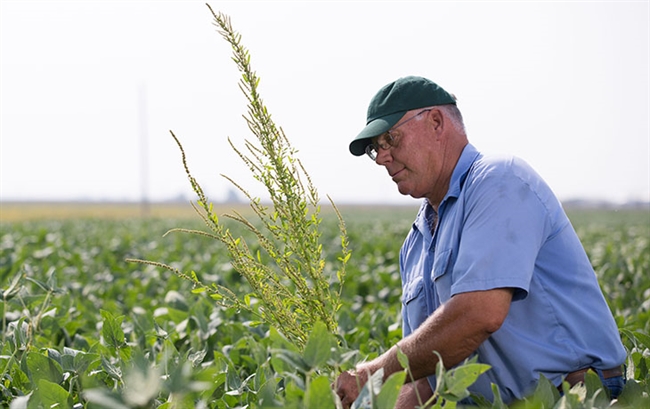How USDA's Open Data Helps Ag Thrive
February 11, 2020 by Melissa Crowe

Photo credit: Flickr/United Soybean Board
Agricultural producers and industry leaders have a new tool from the U.S. Department of Agriculture to make data-driven decisions when it comes to transporting and exporting goods.
USDA’s open data portal gives the public access to dashboards, charts, and raw data on the agriculture transport industry. Insights from this data platform, which launched in June 2019, play a role in “helping agricultural producers thrive in the competitive global agricultural market,” said Bruce Blanton, director of the Transportation Services Division at USDA’s Agricultural Marketing Service, in a written interview.
As much as 85% of the U.S.’ economic growth is expected to occur abroad over the next five years, according to the Brookings Institution’s “Export Monitor” project. This highly competitive global market hinges on an efficient transportation network, and the USDA’s new data portal “is an important part of that process, contributing to price transparency and improving business decision-making,” Blanton said.
Data from USDA’s Transportation Services Division shows U.S. agriculture exports exceed $100 billion annually. And a large portion of these exports, such as grains and soybeans, are coming to China from the Gulf Coast, not the Pacific.
The portal gives users the ability to:
- View up-to-date, interactive dashboards on transportation modes and markets
- Access data in various formats
- Access API-enabled data, which can be used to develop mobile and web apps
- Filter and aggregate data before downloading
- Create visualizations and maps from datasets
- Save personalized dataset views and visualizations, which will be automatically updated to show the latest insights
It also helps USDA meet tenants of the Foundations for Evidence-Based Policymaking Act, which requires federal agencies to publish their information online as open data, using standardized, machine-readable data formats, with their metadata included in the Data.gov catalog.
“The value of data is its ability to improve understanding and decision-making,” Blanton said. “However, extracting value from a dataset can range from easy to very difficult. The new Ag Transportation Platform makes it easy for our customers to extract value from the data.”
Before the platform was implemented, USDA reported on its data in static PDF reports and distributed the data itself through Excel files downloadable from its website. While users could glean insights from the traditional approach through static charts and tables, the challenge was in viewing the data in any way other than how it was presented in the report.
This new technology, powered by Socrata, makes USDA’s export data more “usable, shareable, discoverable, and accessible,” Blanton said. It helps staff reallocate resources and focus on higher-value work while empowering end-users to be self-sufficient. No longer do employees need to spend time pulling together data or sending spreadsheets and charts.
“Our customers are diverse,” Blanton said. “They work around the country, throughout the various agricultural supply chains with many different commodities and with varying intensities of data-driven decision-making.”
Now, USDA can provide crucial features so users can create their own customized views that automatically update, share those insights, and save them to the platform. And, Blanton is already seeing users take advantage of the API and OData endpoints to pull data into their BI tool of choice.
“The new platform and its enhanced functionality removes many of the barriers that stand in the way of customers easily extracting insights from our data for their own unique needs, thus allowing them to more easily improve their understanding and lead to better decision-making,” Blanton said.